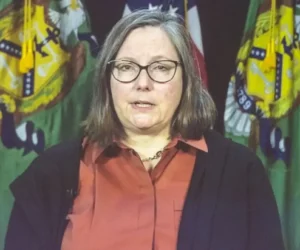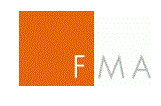
By Rachel Dettmer
It’s estimated that $300 billion is laundered through the United States annually.
Last year, the US published its 2022 National Illicit Finance Strategy, providing a roadmap to close the loopholes that criminals and illicit actors exploit.
It outlines four main priorities and 14 supporting actions:
- Increase transparency and close legal and regulatory gaps in the US AML/CFT framework
- Make AML/CFT regulatory framework for financial institutions more efficient and effective
- Enhance operational effectiveness in combating illicit finance
- Support technological innovation and harness technology to mitigate illicit finance risks
In this article, I’m going to look at the latest developments across the US AML/CFT regime which it can be argued remains a model of effectiveness and innovation.
Treasury Department Announces 2023 De-Risking Strategy
In April, the Treasury announced its De-Risking Strategy, the first of its kind.
‘The strategy reflects the Biden-Harris Administration’s priority to shape a safer, more transparent, and more accessible financial system, while at the same time maintaining a robust framework to protect the US financial system from illicit actors and bolstering national security.’
The negative impacts of de-risking oppose some of the central US government policy aims, as it drives financial activity outside the regulated financial system.
The strategy outlines recommendations on how financial institutions can assess and manage their risk to avoid de-risking large population segments and limiting their access to appropriate financial avenues.
Over the next few months, the Treasury will continue working with the private and public sectors to establish how these recommendations can be best implemented.
Strengthening Sanctions against Russia
Türkiye, Kazakhstan, Uzbekistan, and particularly Armenia have been placed under the spotlight in recent months for actively helping the Russian Federation avoid Western sanctions, with the latter yet to take adequate measures to block imports into Russia.
In response, the US, in coordination with the G7 and other international partners, is now strengthening and expanding sanctions and other restrictive economic measures to cut off Russia further and weaken its illegal war of choice against Ukraine.
“The Department of the Treasury is imposing sanctions on over 120 entities and individuals, including dozens of third-country actors connected to sanctions evasion activities. Treasury also is issuing a new determination identifying the architecture, engineering, construction, manufacturing, and transportation sectors of the Russian Federation economy pursuant to Executive Order (E.O.) 14024, which authorizes sanctions to be imposed on any person determined to operate or to have operated in any of those sectors.’
Top-tier banks are better equipped to deal with sanctions, while smaller regional banks and non-bank financial entities such as investment funds tend to have less developed sanction screening infrastructure and, as a result, could face increased regulatory scrutiny and action for breaches.
As entities and individuals continue to be added to sanction lists, compliance teams must conduct ongoing monitoring and risk management to ensure compliance and avoid penalties as the enforcement gap closes.
Real Estate: A Cloak for Dirty Money
Real estate in America continues to be a thorn in the side of anti-money laundering.
It’s one of the most common methods for criminals to clean their money, and the US has quickly become the preferred destination for stashing illicit funds through property.
This is partly due to the acceptance of cash deals that bypass anti-money laundering rules mortgage lenders are subject to, as well as complex ownership models that either don’t require clear ownership disclosure or vary in what is needed.
The Financial Crimes Enforcement Network (FinCEN) announced the renewal and expansion of its Geographic Targeting Orders (GTOs) to track illicit funds and criminal activity and protect the real estate markets from bad actors.
The existing geographic regions will be required to continue submitting residential real estate purchase data, effective from 25 April until 21 October 2023. The newly expanded geographical regions must submit this data from 24 May 2024 onwards.
You can read more about ‘The Long Journey to Ownership Transparency’ here.
Drug Trafficking: The Opioid Epidemic
Drug trafficking is one of the most lucrative activities for organized criminal groups.
These groups are also experts at identifying and exploiting loopholes in financial systems and employ a variety of money laundering schemes, with the Financial Action Task Force (FATF) noting there is ‘no single business model for layering and subsequent integration methods.’
Undaunted by rules, regulations, or borders, they do whatever they deem necessary, which is a definitive advantage compared to law enforcement.
These illicit financial flows continue to pose a severe risk to socioeconomic development and the State’s security by fueling violence, insecurity, instability, and corruption.
In North America alone, the non-medical use of synthetic opioids like fentanyl is causing hundreds of people to die daily from overdoses and opioid-related deaths and continues to be the leading cause of non-injury-related death.
In March, the White House announced it had pledged $275 million towards its High Intensity Drug Trafficking Areas (HIDTA) Program, supporting Federal, state, local, and tribal law enforcement agencies operating in critical drug-trafficking regions – advancing President Biden’s strategy to beat the overdose epidemic.
The FATF also published a report late last year, the first since 2014, providing information on risk indicators and best practices to aid in money laundering investigations involving the proceeds of drug trafficking.
Crypto Regulation: The Lummis-Gillibrand Bill
Last year, Congress debated digital assets and how these should be regulated on 15 occasions.
The Lummis-Gillibrand Responsible Financial Innovation Act Bill was also introduced to create a “complete regulatory framework for digital assets that encourages responsible financial innovation, flexibility, transparency and robust consumer protections while integrating digital assets into existing law.”
A slimmed-down but stronger iteration of this cryptocurrency legislation was expected mid-April – in which contested definitions and concerns addressed by regulators and the industry would be legally clarified – however, this appears to have been delayed.
It will be one to keep an eye out for in the coming months.
Final Thoughts
The continued effort and prioritization towards improving legislation by the Biden-Harris administration to address vulnerabilities being exploited by criminals is promising, and it’s great to see this trajectory continue.
However, many new frameworks and regulatory obligations often present challenges for banks and financial institutions.
One of the easiest ways for organizations to comply with these complex anti-money laundering and counter-terrorist financing (AML/CFT) measures is through a secure partnership with a trusted provider like AML RightSource.
If you want to learn more about our global services, solutions, and cutting-edge technology that’s changing the way the industry looks and thinks about financial crime compliance, just fill out our contact form, and we’ll start the conversation.
At AML RightSource, we combine industry-leading expertise and cutting-edge technology to provide our partners with customized financial crime compliance solutions.
The author is Brand Content Manager – Solutions for AML RightSource
Share this on:
Follow us on:








